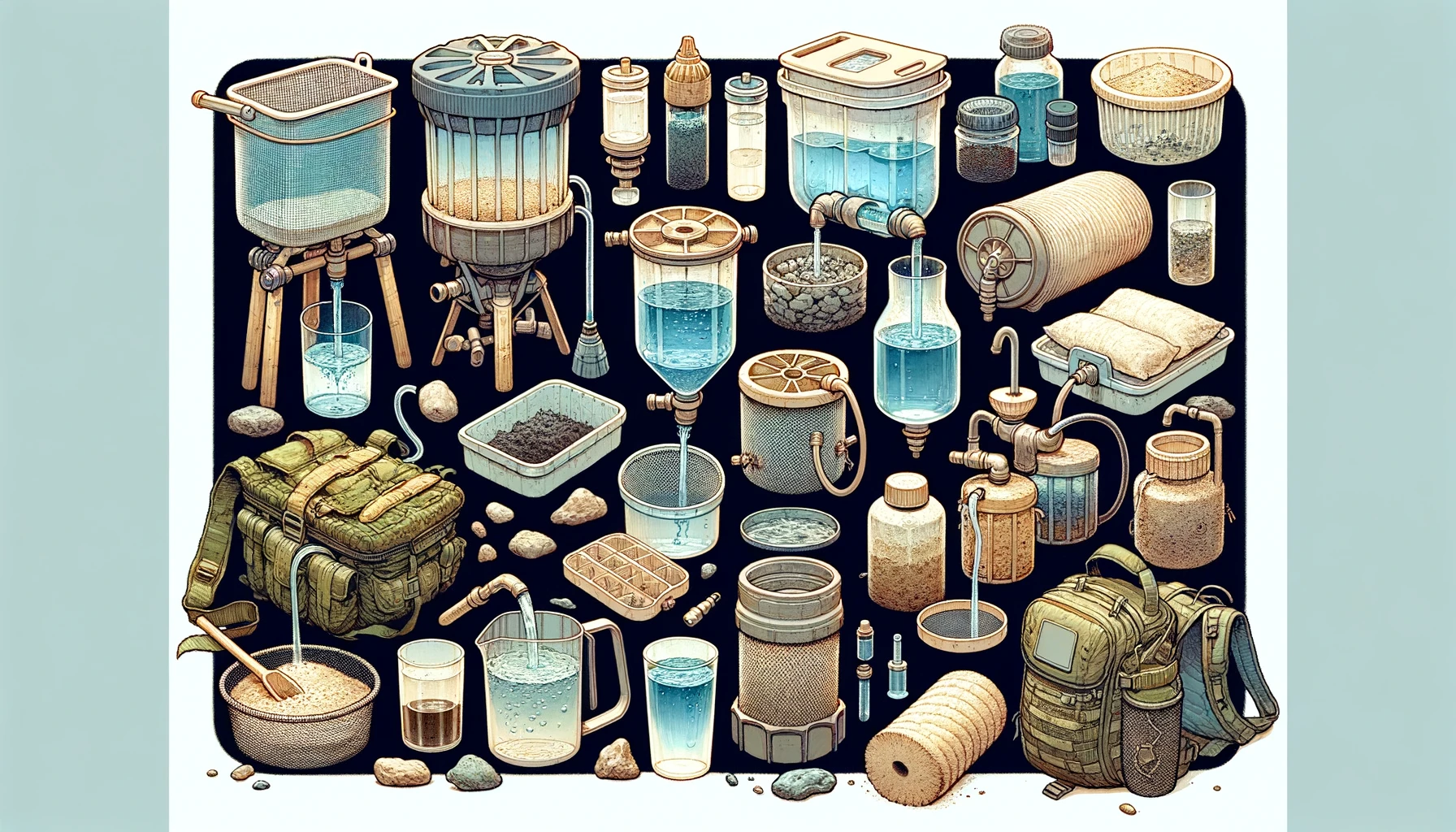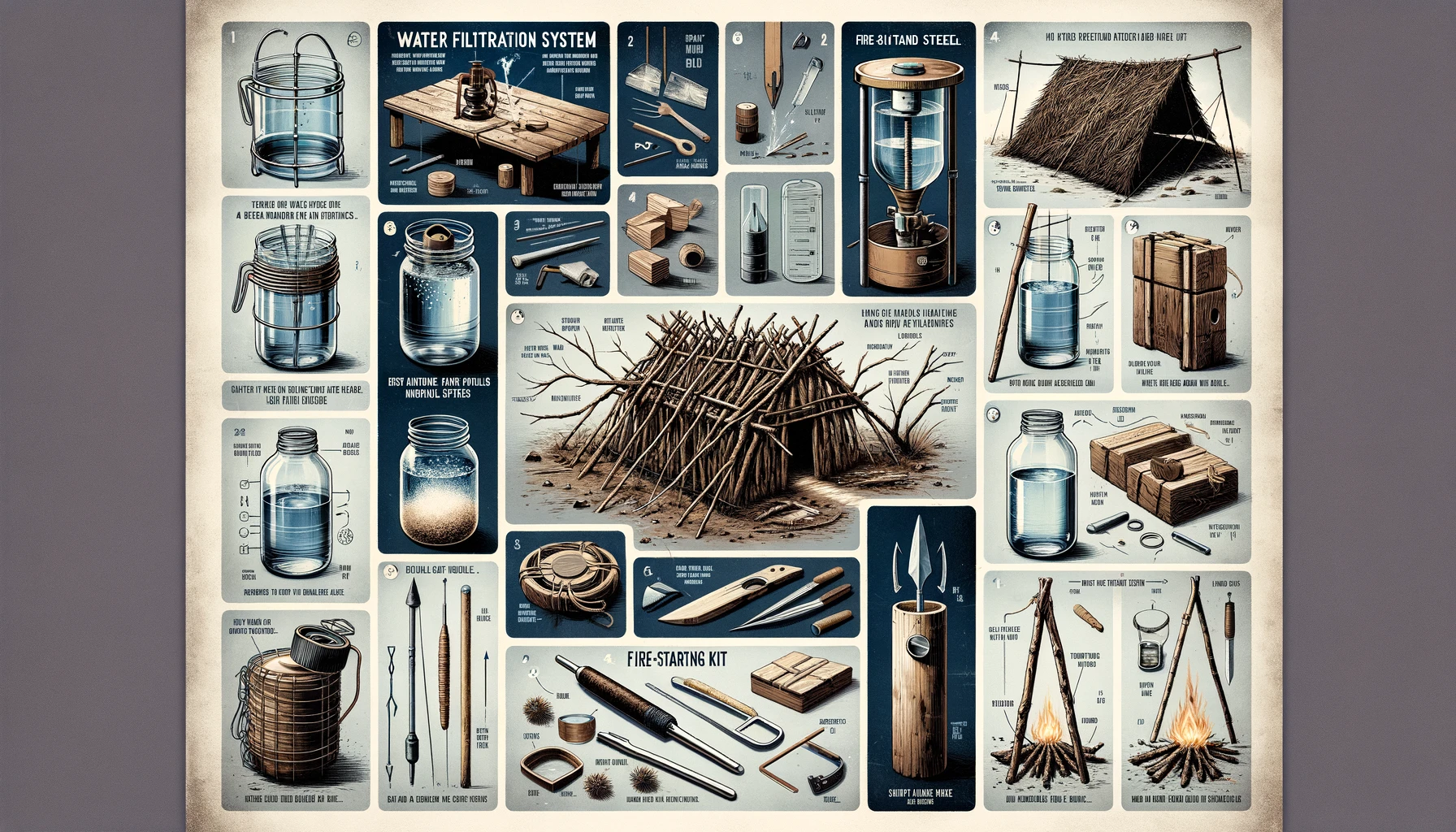In the world of survival and preparedness, being able to rely on your own skills and the tools you create is invaluable. DIY survival projects not only enhance your self-reliance but can also be a fulfilling hobby. This comprehensive guide will walk you through various do-it-yourself guides for creating survival gear and tools, from the simplest to more advanced projects. Whether you’re a seasoned survivalist or just starting, these projects will help you prepare for any situation.
Understanding the Basics of DIY Survival Gear
Before diving into specific projects, it’s crucial to understand the basics of DIY survival gear. The core principle is to create items that are essential for survival, including tools for obtaining food and water, ensuring shelter and warmth, and providing safety. The materials used for these projects can often be found around your house or obtained from nature, emphasizing the importance of resourcefulness.
Water Filtration Devices

One of the most critical survival skills is the ability to purify water. Contaminated water can lead to severe illness, so having a reliable method to filter water is essential. A simple DIY water filter can be made using a plastic bottle, gravel, sand, charcoal, and a piece of cloth. By layering these materials in the bottle, you create a basic filtration system that can remove particles and improve water quality.
Fire Starters
Being able to start a fire is crucial for warmth, cooking, and signaling for help. Homemade fire starters are easy to make and can be a lifesaver in wet conditions. One popular method involves soaking cotton balls in petroleum jelly. These can be stored in a waterproof container and will ignite easily, burning long enough to catch kindling.
DIY Shelter Solutions
Shelter is critical for protection from the elements and can be made from various materials. A simple tarp shelter can be created using a waterproof tarp and some rope. By learning a few basic knots and understanding how to position the tarp, you can create a shelter that will keep you dry and protected. For colder environments, insulating your shelter with leaves or grass can provide additional warmth.
Crafting a Survival Knife
A survival knife is one of the most versatile tools you can have. While crafting a knife from scratch requires some skill, it’s possible to create a basic survival knife from an old saw blade. The process involves shaping the blade, creating a handle from wood or another material, and securing the two together. This project requires some basic tools and a bit of patience but can result in a highly personalized and functional survival tool.
Fishing and Trapping Gear
Securing food in a survival situation often means relying on fishing or trapping. Simple fishing gear can be made from a line, a hook, and a makeshift rod. Additionally, learning to create basic snares and traps from natural materials can provide a passive way to catch food, allowing you to focus on other survival tasks.
Emergency Lighting
Having a reliable source of light can make a significant difference in a survival situation. DIY oil lamps are simple to make using vegetable oil, a jar, and a cotton wick. These lamps can provide light for hours and are a safer alternative to open flames in some situations. Additionally, creating a solar-powered light using a few basic electronic components can offer a renewable light source.
Navigation Tools
In a survival situation, knowing your direction can be crucial. A simple compass can be made using a needle, a magnet, and a piece of cork floating in water. By magnetizing the needle and placing it on the cork, it will align with the Earth’s magnetic field, pointing north. While not as accurate as a conventional compass, this can be a valuable tool when other options are unavailable.
First Aid Kit
A well-stocked first aid kit is a must-have for any survival situation. While commercial kits are available, creating your own allows you to customize the contents to your needs. Essential items include bandages, antiseptic wipes, medical tape, scissors, tweezers, and any personal medications. A DIY kit can be stored in a waterproof container and should be checked and updated regularly.
Signaling Devices
Being able to signal for help can be a life-saving skill. Simple signaling devices can be made using mirrors, whistles, or even brightly colored fabric. A mirror can be used to reflect sunlight, creating a visible signal for rescuers. Whistles can carry sound far distances, and bright fabric can be used to create markers or signals visible from the air.
Conclusion
DIY survival projects not only equip you with valuable tools and skills but also foster a deeper understanding of self-reliance and resourcefulness. By starting with simple projects and gradually tackling more complex ones, you can build a comprehensive set of survival gear tailored to your needs. Remember, the key to survival is not just having the right tools but also the knowledge and creativity to use what’s available effectively. As you embark on these DIY projects, embrace the learning process and take pride in the ability to rely on yourself in any situation.


0 Comments